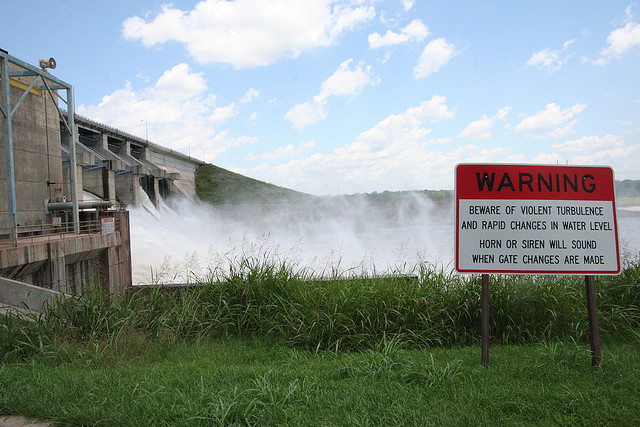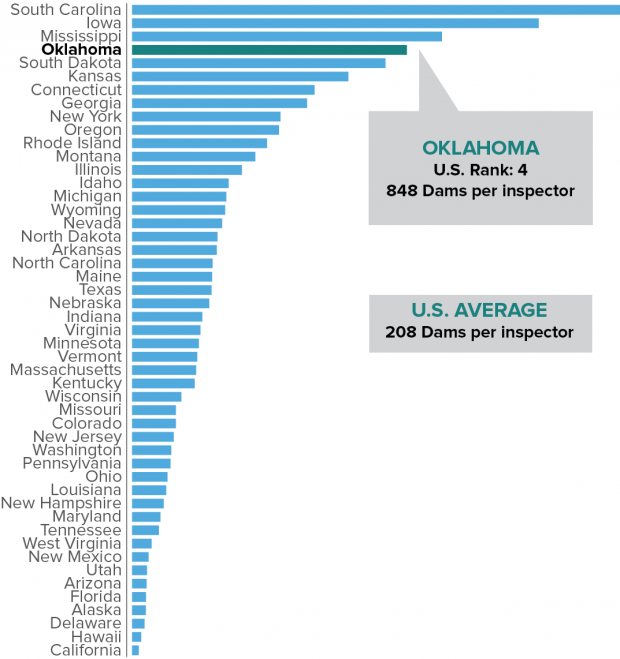
Dam at Kaw Lake in north central Oklahoma.
pcol / flickr


Dam at Kaw Lake in north central Oklahoma.
pcol / flickr
Building new reservoirs in Oklahoma is a thing of the past, at least for now.
The boom, which peaked here in the mid-’60s, has evaporated. Meanwhile, the population is growing, and researchers say parts of the state are getting drier.
The situation is similar with dams. Throughout the country, dam building is a relic of the past. Most were built before 1970 — and thousands are more than a century old, writes Stateline’s Jim Malewitz:
The number of deficient dams in the U.S. — those with structural or hydraulic issues that increase the risk of failure — is rising dramatically, outpacing the rate at which they can be fixed. But as austerity continues across governments, funds for inspection and upkeep are static or shrinking in most states.
On one measure of dam safety, the Sooner State ranks poorly compared to other states. Basically: Oklahoma has a lot of dams and few inspectors.

Joe Wertz / Source: Association of State Dam Safety Officials
States ranked by dams per full-time equivalent inspection employee. No data was available for Alabama.
Oklahoma has more than 4,700 dams, 2011 data from the National Inventory of Dams show. Most of those are state controlled, and more than 300 have “high hazard potential,” according to the Association of State Dam Safety Officials. The definition of hazardous dam varies from state to state, but Stateline reports that most are “associated with the likelihood that a failure will lead to fatalities:”
“They’re doing the best job they can. They just don’t have the resources,” says Lori Spragens, executive director of the Association of State Dam Safety Officials. “There are just not enough inspectors out there.”
Oklahoma has 5.35 full-time equivalent employees dedicated to dam oversight, association data show, which means Oklahoma has about 848 dams per inspection staffer — far higher than the U.S. average.
States aren’t likely to fix the dam problems on their own, Stateline reports, and safety advocates will likely ask Washington, D.C. lawmakers to reinstate the 2006 National Dam Safety Act:
The $14 million yearly program, which expired a year ago, helped states retain staff, educate dam owners and buy essential equipment. Since then, funding has trickled in from the Federal Emergency Management Agency, but it has fallen short of plugging the gap.